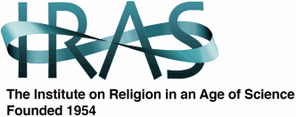Science, Religion & Society: An Online Series
Inaugural Sessions that started during summer of 2020
For 65 years, The Institute on Religion in an Age of Science (IRAS) has held summer Conferences on Star Island, off the coast of Portsmouth, New Hampshire. Due to the pandemic, we had to postpone our 2020 Star Island conference until the summer of 2021. In order to continue to engage with IRAS themes and the IRAS community, with Star Island’s generous support, we launched a live webinar series: Science, Religion, & Society. Below are the collected session videos.
Next Session:
|
Will Modern Civilization be the Death
of Us? Have Humans Become Obsolete? with William Rees August 13, 2024, at 4 PM Central time 5 PM Eastern time This IRAS webinar is FREE but registration is required. Please register using the link below. If you have questions, contact CJ Love: [email protected] |
About the August 13, 2024 webinar:
Will Modern Civilization be the Death of Us? Have Humans Become Obsolete? Presentation Overview: In June 2020, Dr. William (Bill) Rees, Emeritus Professor, U British Columbia, and Ruben Nelson, Executive Director, Foresight Canada and a past Vice-Chair of IRAS, made the case as they then understood it that the most reasonable answer to the above question is “Yes, this appears to be the case.” About the August 13 presenter: Dr. William Rees is a population ecologist, ecological economist, Professor Emeritus and former Director of the University of British Columbia’s School of Community and Regional Planning. His research focuses on the biophysical requirements for sustainability and on the implications of global ecological trends for global civilization. Dr. Rees is perhaps best known as the originator and co-developer of ‘ecological footprint analysis’ (EFA), a quantitative tool that shows the extent to which humanity is in ‘ecological overshoot’. Overshoot poses a serious challenge to policies promoting the continued growth of the human enterprise—we would need almost five Earth-like planets to support just the present world population sustainably. |
Upcoming Sessions:
|
September
|
TBD
|
Find past sessions in the Webinar Archive
Proudly powered by Weebly
